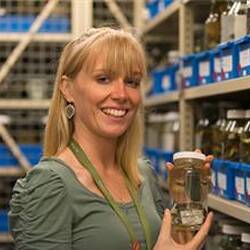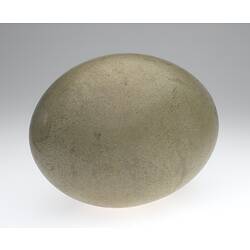Ornithology
The Ornithology Collection began with the establishment of the Museum when the first director, Sir Frederick McCoy, purchased items for the zoology collection. These included large collections from famed ornithologist, John Gould and specimens collected by Charles Darwin and Alfred Russel Wallace.
The collection now contains more than 70,000 avian specimens representing over 4000 species, making it the second largest collection of birds in Australia. It contains the most complete collection of Victorian bird species in the world and also contains specimens from elsewhere in Australia and the world. The collection consists of mounted birds, dry skins, skeletons, eggs and nesting material, specimens preserved in 70% ethanol and cryogenically preserved tissues. Associated with these specimens are images, data, and literature (including field notebooks).
Significance
The greatest strength of the Ornithology Collection is the taxonomic breadth of its specimens. It includes complete representation of Victorian bird species, unmatched in any other collection in the world, and significant representation of comparative material from other Australasian and global bird species. The collection contains irreplaceable material such as type specimens (from which species are named and which are essential comparative material for their description) and specimens representing extinct, endangered or rare species that are not well represented elsewhere. The osteological (skeletal) and oological (egg) collections are amongst the best in Australia and provide unparalleled access to morphological and reproductive information on avian species across time and space. The Ornithology Collection has extensive research value including, taxonomy, morphology, phylogenetics (how species are related), reproductive ecology and dietary ecology. The historical depth of the collection, spanning over 150 years, makes it particularly valuable for understanding biological responses over time.









